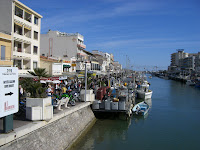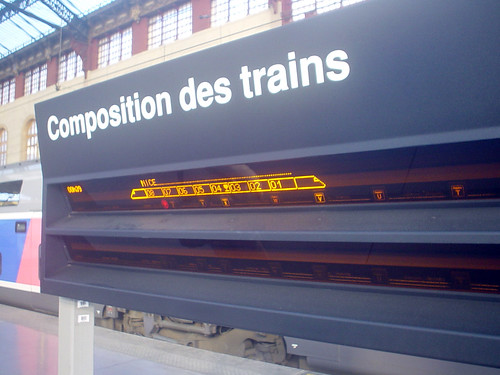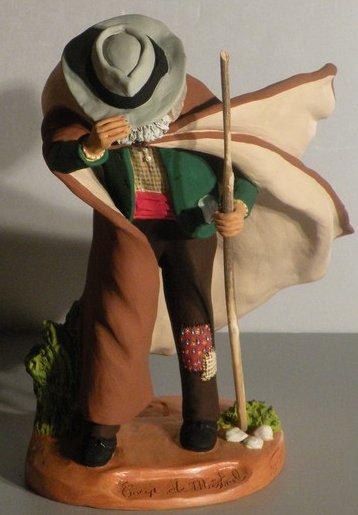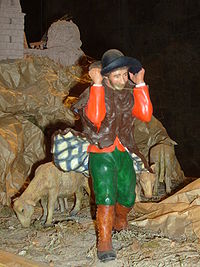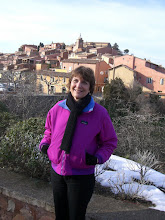
In 1635 le cardinal Richelieu, minister of Louis XIII, made good on a promise of sponsoring a small number of people who met at l’Hôtel de Rambouillet to discuss literature. The group became l’Académie française, a highly-respected organization which continues to function today. The Academy acts as the official authority to advise the nation on the appropriate usage, vocabulary, and grammar of the French language; it is also charged with publishing an official dictionary and with distributing prizes for different literary genres and criticism, as well as for cinema, history, art history, philosophy, and in the area of Francophonie for French-speaking areas outside of la métropole. Because the official seal granted by Richelieu contains the motto À l’immortalité, the forty individuals who are elected to the organization for life are called les immortels. There is the possibility, however, of being unseated in the case of grave misconduct, as were members of the Vichy government such as Pétain after the Second World War. Since its origins in the seventeenth century, in over 700 elections, the French Academy has only selected five women as members, including Marguerite Yourcenaur and Assia Djebar. Poet, Senegalese president, and long-time French resident before his death in 2001, Léopold Sédar Senghor also became an immortel.
 In general, members are writers (e.g. Victor Hugo), politicians (Giscard d’Estaing), scientists (Pasteur), lawyers, historians, philosophers (like Voltaire and Michel Serres), and high level clergymen. In 2008, musician and songwriter, Jean-Loup Dabadie (pictured in center), joined the French Academy. Members meet on Thursdays sous la coupole (under the dome, as they say) of l’Institut de France in Paris. Their ceremonial clothing includes an embroidered green jacket, l’habit vert, and for the men a hat called a bicorne and a sword, une épée.
In general, members are writers (e.g. Victor Hugo), politicians (Giscard d’Estaing), scientists (Pasteur), lawyers, historians, philosophers (like Voltaire and Michel Serres), and high level clergymen. In 2008, musician and songwriter, Jean-Loup Dabadie (pictured in center), joined the French Academy. Members meet on Thursdays sous la coupole (under the dome, as they say) of l’Institut de France in Paris. Their ceremonial clothing includes an embroidered green jacket, l’habit vert, and for the men a hat called a bicorne and a sword, une épée.  L'Académie is a conservative body which attempts to “purify” the language. In the past it has rejected neologisms such as the verb alunir (“to land on the moon”), prefering instead the longer and more clumsy alternative atterrir sur la lune. Recently, the use of the term ministre in the feminine to refer to women ministers was refused in favor of maintaining its original masculine form. (I have to think that Richelieu would be proud!) One of the French Academy’s most difficult challenges has been trying to limit the influx of English, or more correctly American, words from entering the language. It seems more and more to be a losing battle; on this visit to France we have been shocked at the amount of English words which have worked their way into French. Much of it, of course, is on television, where I assume people feel that it shows a certain erudition to use English. The vocabulary covers a wide variety of topics and situations: from simple exclamations such as “oops!” and “wow!” (Frenchified in spelling--usually but not always--to oups! and waouh! to suit their pronunciation rules) to adjectives like cozy and groggy (I assume admitted “as is” in terms of spelling). Not surprisingly, I suppose, computer phrases like un bug informatique and des spams are flourishing. Many times, though, it’s puzzling to hear English adjectives (like crazy, fun, or old-school) or nouns (like un break, un discount, un flop, un hobby, or le finish) when perfectly acceptable French words exist. And it’s not just on television that one sees or hears English. Billboards attempt to entice you to buy le mobilier outdoor (“patio furniture,” we would probably say) or des options low-cost for any number of products or services. Even the réparateur who came to fix the belt on our washing machine early in our stay used the word “spin” instead of l’essorage. A warning: pronunciation is always à la française and sometimes difficult to understand.
L'Académie is a conservative body which attempts to “purify” the language. In the past it has rejected neologisms such as the verb alunir (“to land on the moon”), prefering instead the longer and more clumsy alternative atterrir sur la lune. Recently, the use of the term ministre in the feminine to refer to women ministers was refused in favor of maintaining its original masculine form. (I have to think that Richelieu would be proud!) One of the French Academy’s most difficult challenges has been trying to limit the influx of English, or more correctly American, words from entering the language. It seems more and more to be a losing battle; on this visit to France we have been shocked at the amount of English words which have worked their way into French. Much of it, of course, is on television, where I assume people feel that it shows a certain erudition to use English. The vocabulary covers a wide variety of topics and situations: from simple exclamations such as “oops!” and “wow!” (Frenchified in spelling--usually but not always--to oups! and waouh! to suit their pronunciation rules) to adjectives like cozy and groggy (I assume admitted “as is” in terms of spelling). Not surprisingly, I suppose, computer phrases like un bug informatique and des spams are flourishing. Many times, though, it’s puzzling to hear English adjectives (like crazy, fun, or old-school) or nouns (like un break, un discount, un flop, un hobby, or le finish) when perfectly acceptable French words exist. And it’s not just on television that one sees or hears English. Billboards attempt to entice you to buy le mobilier outdoor (“patio furniture,” we would probably say) or des options low-cost for any number of products or services. Even the réparateur who came to fix the belt on our washing machine early in our stay used the word “spin” instead of l’essorage. A warning: pronunciation is always à la française and sometimes difficult to understand. Last month a new comedy starring Sophie Marceau came out entitled LOL, which got me wondering about le langage texto, also called les mots SMS (for “short message service
 words”). Naturally, plenty of genuine French words make the texto list: ht for acheter (“to buy”), oqp for occupé (“busy”), vazi for vas-y (“go ahead”), and @+ for à plus [tard] (“see you [later]”). Le verlan is also well-represented in text messages, as it is in the spoken language; this kind of slang consists of words made by reversing the consonant sounds, a bit like “pig latin.” We find the French word for “woman”—femme—which becomes meuf, parents becomes renps, fou (or “crazy”--see, I told you they had a word!) becomes ouf, and méchant (“mean”) becomes chanmé. As expected, there are lots of English words and expressions: "4me" is used for pour moi, "kiss" instead of bisou, "sry"("sorry") for désolé, and "asap" stands for aussi vite que possible. There's a book out completely written in le langage texto by Phil Marso, Pa Sage a TaBa vo SMS, for anyone
words”). Naturally, plenty of genuine French words make the texto list: ht for acheter (“to buy”), oqp for occupé (“busy”), vazi for vas-y (“go ahead”), and @+ for à plus [tard] (“see you [later]”). Le verlan is also well-represented in text messages, as it is in the spoken language; this kind of slang consists of words made by reversing the consonant sounds, a bit like “pig latin.” We find the French word for “woman”—femme—which becomes meuf, parents becomes renps, fou (or “crazy”--see, I told you they had a word!) becomes ouf, and méchant (“mean”) becomes chanmé. As expected, there are lots of English words and expressions: "4me" is used for pour moi, "kiss" instead of bisou, "sry"("sorry") for désolé, and "asap" stands for aussi vite que possible. There's a book out completely written in le langage texto by Phil Marso, Pa Sage a TaBa vo SMS, for anyone 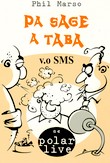 up for un vrai challenge to test their text messaging skills.
up for un vrai challenge to test their text messaging skills.







